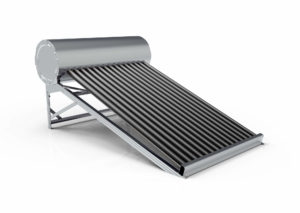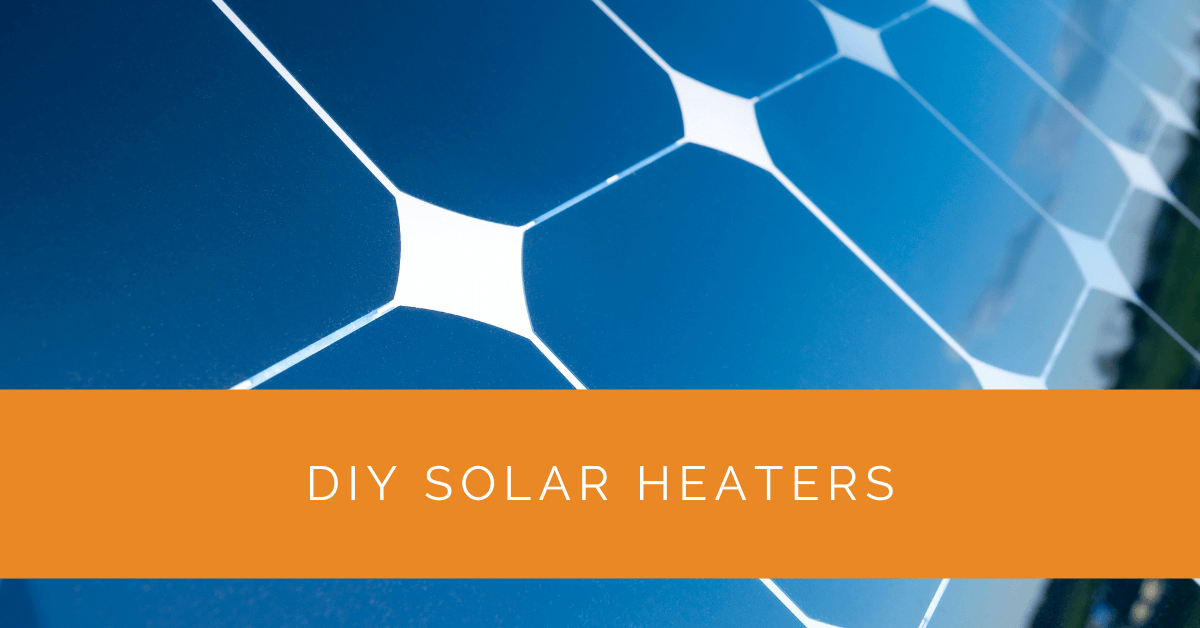As the world increasingly embraces renewable energy solutions, harnessing the sun’s power has become a popular choice for sustainable heating. DIY solar heaters offer an affordable and eco-friendly way to utilize solar energy for various applications, including air heating. This comprehensive guide will delve into the intricacies of DIY solar air heaters, providing step-by-step instructions and tips and answering frequently asked questions to help you build your own efficient and cost-effective solar heating system.
Contents
- 1 Solar Air Heating: An Overview
- 2 Building a DIY Solar Air Heater
- 3 FAQ
- 3.1 How efficient are DIY solar heaters in providing heat?
- 3.2 Can DIY solar heaters be used in all climates?
- 3.3 What is the payback period for DIY solar heaters?
- 3.4 Can I integrate a DIY solar air heater with an existing heating system?
- 3.5 Are there any government incentives or rebates for installing DIY solar heaters?
- 4 Case Study: Building a DIY Solar Air Heater for Sustainable Home Heating
- 5 Expert Insights From Our Solar Panel Installers About DIY Solar Heaters
- 6 Conclusion
Solar Air Heating: An Overview
Solar air heating utilizes solar energy to heat the air, which can be circulated throughout a space, providing warmth and comfort. Solar air heaters harness sunlight through solar panels and transfer the heat to the surrounding air. This heated air can be utilized for space heating, reducing reliance on traditional heating systems and saving energy costs.
Building a DIY Solar Air Heater
Materials and Tools Needed
You will require several materials and tools to embark on your DIY solar air heater project. The essential materials include plywood, polycarbonate or glass sheet, pop cans, downspouts, insulation material, screen layers, and appropriate fasteners. Additionally, you will need tools such as a saw, drill, screws, caulk, and a heat-resistant adhesive.
Step-by-Step Guide to Building a DIY Solar Air Heater
- Preparing the Solar Panel: Begin constructing the solar panel using plywood as the base. Cut and attach the absorber plate, typically metal, to the plywood. Ensure proper insulation between the absorber plate and the back layer of the panel.
- Constructing the Air Heating Chamber: Build the air heating chamber using plywood or other materials. Position the solar panel inside the chamber, leaving space for airflow. Install inlet and outlet ports to facilitate air circulation.
- Installing the Solar Panel and Absorber Plate: Place the solar panel with the absorber plate facing the sunlight, ensuring optimal exposure. Secure the panel in position within the air heating chamber.
- Connecting the Air Inlet and Outlet: Connect ducts or downspouts to the air inlet and outlet ports. These ducts will allow the cold air to enter the system and the heated air to be released into the desired space.
- Insulating the System: Insulate the solar air heater to prevent heat loss. Ensure proper insulation around the ducts, the air heating chamber, and the solar panel. This step is crucial to maximize the efficiency of the system.
- Fine-Tuning and Optimizing the DIY Solar Air Heater: Check for air leaks and seal them with caulk or adhesive. Ensure proper airflow through the system and optimize the positioning of the solar air heater for maximum sun exposure. Consider integrating a thermostat or control mechanism to regulate the temperature.
Tips and Best Practices
- Prioritize safety throughout the construction and operation of your DIY solar air heater.
- Position the solar air heater in a location that receives ample sunlight throughout the day.
- Regularly clean and maintain the system to ensure optimal performance.
- Consider using additional insulation or reflective materials to enhance heat absorption and retention.

FAQ
How efficient are DIY solar heaters in providing heat?
DIY solar heaters can be highly efficient, especially when designed and constructed correctly. Factors such as insulation, solar panel efficiency, and system integration significantly determine their overall efficiency. With proper insulation and optimized design, DIY solar air heaters can provide a reliable heat source, especially in sunny regions. It’s important to ensure that the system is well-sealed to prevent heat loss and that the solar panel is positioned to receive maximum sunlight exposure.
Can DIY solar heaters be used in all climates?
While DIY solar heaters can be used in various climates, their effectiveness may vary. They are most efficient in regions with abundant sunlight. However, even in colder climates, DIY solar heaters can still provide a supplementary heat source and help reduce energy costs. It’s essential to consider factors such as insulation, system design, and the specific heating needs of your location when implementing a DIY solar air heating system.
What is the payback period for DIY solar heaters?
The payback period for DIY solar heaters depends on various factors, including the initial investment, energy savings, and local energy costs. Generally, DIY solar heaters have a relatively short payback period compared to other renewable energy systems. By harnessing solar energy, you can significantly reduce your reliance on traditional heating methods, resulting in long-term energy savings. The payback period can range from a few years to a decade, depending on the system’s efficiency and your specific circumstances.
Can I integrate a DIY solar air heater with an existing heating system?
Yes, it is possible to integrate a DIY solar air heater with an existing heating system. By doing so, you can supplement the heat generated by the solar air heater with your primary heating system during limited sunlight or increased heating demands. Proper system integration requires careful planning and consideration of the existing heating system’s compatibility and controls. Consulting with a professional or experienced DIY solar heating installer can provide valuable guidance.
Are there any government incentives or rebates for installing DIY solar heaters?
Government incentives and rebates for DIY solar heaters vary by country and region. Many governments and local authorities offer incentives to promote the adoption of renewable energy technologies, including solar heating systems. These incentives may include tax credits, grants, rebates, or low-interest financing options. Researching and consulting local renewable energy programs, government websites, and energy agencies is advisable to determine the specific incentives available in your area.
Case Study: Building a DIY Solar Air Heater for Sustainable Home Heating
Background
At Solar Panels Network USA, we are dedicated to promoting sustainable and cost-effective energy solutions. Recently, we embarked on a project to build a DIY solar air heater, aiming to provide an affordable and eco-friendly heating solution for residential use. This case study outlines our approach, challenges, and outcomes, demonstrating the practicality and benefits of solar air heating.
Project Overview
Our goal was to design and construct a DIY solar air heater that could effectively heat a small residential space, reducing dependence on conventional heating systems and lowering energy costs. We wanted to create a system that was not only efficient but also easy to build and maintain.
Implementation
Step 1: Gathering Materials and Tools
We began by sourcing the necessary materials, including plywood for the base, a polycarbonate sheet for the solar panel cover, pop cans and downspouts for the air channels, insulation materials, and appropriate fasteners. Essential tools included a saw, drill, screws, caulk, and a heat-resistant adhesive.
Step 2: Designing and Preparing the Solar Panel
We constructed the solar panel using plywood as the base and an absorber plate made of metal. Proper insulation was placed between the absorber plate and the back layer of the panel to minimize heat loss. This design ensured that the solar panel could effectively capture and retain heat from the sun.
Step 3: Building the Air Heating Chamber
The air heating chamber was built using plywood, with the solar panel positioned inside. We installed inlet and outlet ports to facilitate air circulation. The chamber was designed to maximize airflow and heat transfer efficiency.
Step 4: Installing and Connecting Components
We placed the solar panel with the absorber plate facing the sunlight for optimal exposure. Ducts were connected to the air inlet and outlet ports, allowing cold air to enter and heated air to be released into the desired space. The system was then insulated to prevent heat loss, ensuring maximum efficiency.
Step 5: Fine-Tuning and Testing
We carefully checked for any air leaks and sealed them with caulk. The system’s airflow was optimized, and the solar air heater was positioned to receive maximum sunlight throughout the day. We integrated a simple thermostat to regulate the temperature, enhancing the system’s usability.
Results
Efficiency and Performance
The DIY solar air heater proved to be highly efficient, providing a consistent and reliable heat source for the test space. The system maintained a comfortable temperature indoors, even during cooler days, significantly reducing the need for conventional heating.
Cost Savings
By utilizing solar energy, we achieved considerable energy cost savings. The initial investment in materials and construction was quickly offset by the reduction in electricity bills. Over time, the system demonstrated a short payback period, making it a financially viable solution.
Environmental Impact
The project highlighted the environmental benefits of solar air heating. By reducing reliance on fossil fuels, we lowered carbon emissions and promoted a greener, more sustainable living environment. The system’s success underscored the potential for DIY solar heaters to contribute to global renewable energy goals.
Summary
Our DIY solar air heater project at Solar Panels Network USA demonstrated the practicality and benefits of using solar energy for heating. By carefully designing and constructing the system, we achieved significant cost savings, improved energy efficiency, and reduced environmental impact. This project serves as a testament to the potential of DIY solar heaters in promoting sustainable living and energy independence.
Building a DIY solar air heater is an accessible and rewarding project for anyone looking to embrace renewable energy solutions. By following our detailed guide and implementing best practices, you can create an efficient and cost-effective solar heating system that contributes to a greener future.
Expert Insights From Our Solar Panel Installers About DIY Solar Heaters
Building a DIY solar heater is a fantastic way to harness renewable energy for heating purposes. Proper insulation and positioning of the solar panel are key to maximizing efficiency and heat retention.
Renewable Energy Specialist
When constructing a solar air heater, it’s crucial to use high-quality materials and ensure airtight seals to prevent heat loss. This can significantly enhance the performance of your DIY system.
Senior Solar Technician
Integrating a DIY solar heater with your existing heating system can provide substantial energy savings, especially during sunny days. It’s a practical approach to reducing your reliance on traditional energy sources.
Solar Energy Consultant
Conclusion
Building a DIY solar air heater provides a rewarding opportunity to harness the sun’s energy for sustainable heating and cost savings. Following the step-by-step guide and implementing the tips in this article, you can construct an efficient and effective solar heating system. DIY solar heaters offer a practical solution for space heating, reducing reliance on traditional heating methods and contributing to a greener future.
Remember to prioritize safety during the construction and operation of your DIY solar air heater. Regular maintenance and cleaning will help ensure optimal performance. Embrace the power of solar energy and start your journey towards a more sustainable and energy-efficient home. By harnessing the sun’s warmth, you can experience the benefits of DIY solar heaters while reducing your carbon footprint and enjoying long-term energy savings.
Building a DIY solar air heater is a fulfilling project that combines environmental consciousness, energy efficiency, and practicality. Start today and enjoy the warmth and savings of harnessing the sun’s power!
About the Author
Solar Panels Network USA stands at the forefront of solar energy solutions, driven by a team of seasoned solar engineers and energy consultants. With over decades of experience in delivering high-quality solar installations and maintenance, we are committed to promoting sustainable energy through customer-centric, tailored solutions. Our articles reflect this commitment, crafted collaboratively by experts to provide accurate, up-to-date insights into solar technology, ensuring our readers are well-informed and empowered in their solar energy decisions.

